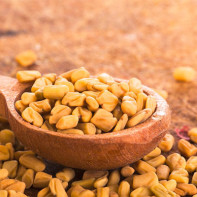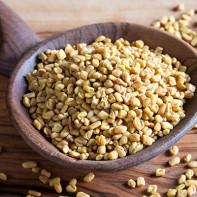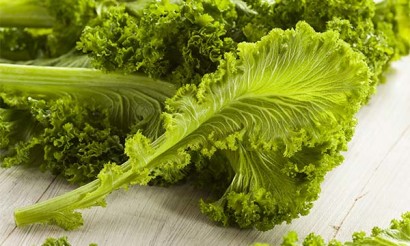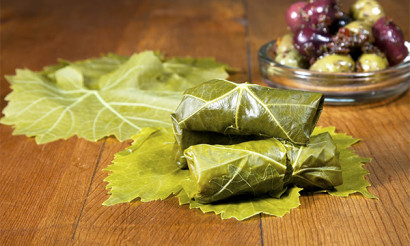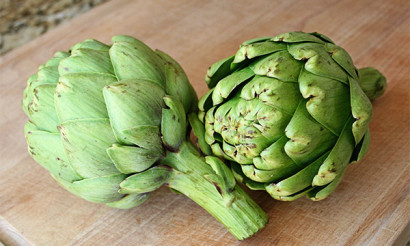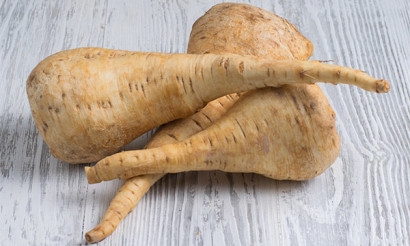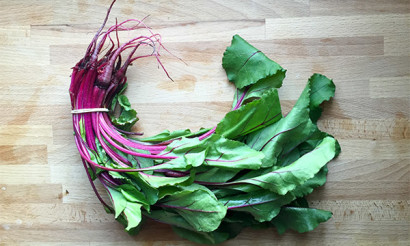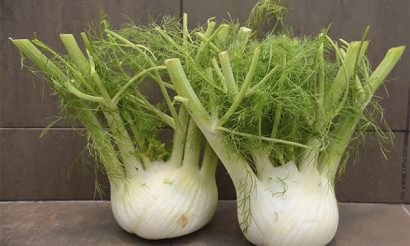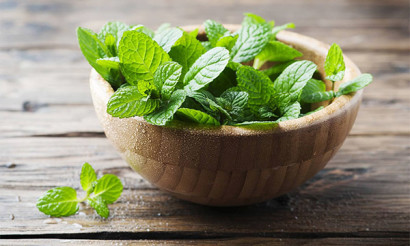Fenugreek: useful properties and contraindications
Fenugreek is an herbaceous plant belonging to the Legumes.
- How it looks and where it grows
- Types
- Cultivation of fenugreek
- Composition and calories
- Useful properties of fenugreek
- General benefits
- For Women
- For Men
- In Pregnancy
- For breastfeeding
- For children
- Slimming
- What are the benefits of germinated seeds
- Is fenugreek cheese useful?
- Fenugreek in medicine
- For Diabetes
- For pancreatitis
- For bowel
- For cough
- For flatulence
- For constipation
- For gout
- For the Liver
- For menopause
- For hypothyroidism
- For oncology
- For mastopathy
- Fenugreek in cosmetology
- Culinary applications of fenugreek
- Arabian sauce
- Egyptian Classical Pasta
- Robiloe Cheese
- How to choose and save the seeds
- How to brew fenugreek tea
- Fenugreek oil: properties and uses
- Harm and contraindications
- Interesting facts
How it looks and where it grows
The life cycle of the shrub is one year. The height reaches 0.4-0.7 m. The stems are branched, thin, straight, covered with small oval leaves. Inflorescences are gathered in 3-4 pieces, each of them is a rosette. Flowers are small, with a white or light blue tint. Fruits mature in a seed pod, which is a small oblong boll 8-10 cm long, containing 15 to 25 golden-brown beans each. When raw, the latter are bitter in taste and aroma, but after slight roasting, the unpleasant property is lost.
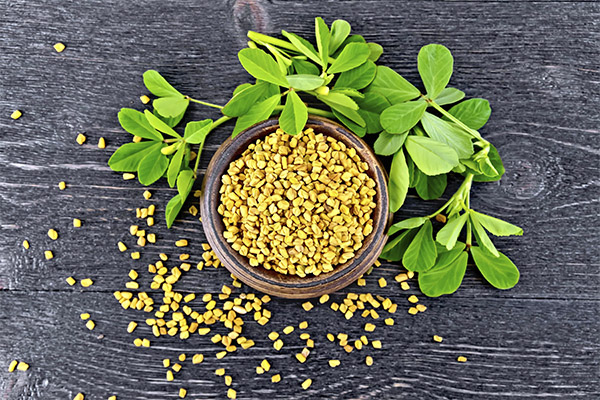
Literally, the name is translated from Latin as "Greek hay" and from German as "goat horns. The plant is also called chambala, fenugreek, mushroom herb, Arabian hellebore, chaman, and melissitus. It is valued both for its taste characteristics and for its health-enhancing properties, and is often found in popular spice formulations.
The unpretentious crop can be found in clay and loamy soils. Chambray is common in the natural environment. But because of its usefulness, the mushroom grass began to be cultivated in many household plots. The shrub can be found in the expanses of Armenia, Turkey, Egypt, India, Ethiopia, Iran, Iraq and in Caucasian and Eastern European latitudes. It is grown in small quantities in the United States, France, Argentina, and Morocco.
Species
Two varieties are distinguished:
- hay;
- blue.
The only difference is the coloration of the flowers. The first is yellowish-white, while the second is a gentle blue.
Hay chelba remotely resembles peas. Its stems branch out feebly and reach a height of 40-50 cm. With a high density of crops in high agrophons, they tend to stick together. Despite this, the branches are slightly raised up.
The leaves are similar to the Legume family - with a complex three-leafed, petiolate shape. The inflorescences are unremarkable, sessile type. One leaf axil contains a pair of flowers. The corollas of the latter are barely yellow almost milky in color, becoming purple closer to the base.
Flowering begins in the second decade of June, and fruits ripen by July-August. They are straight or curved, glabrous or slightly drooping, gradually tapering into straight spouts. The seeds are triangular or diamond-shaped, resembling brown-yellow fine pebbles. It is more commonly used as an additive to seasonings.
To a limited extent, the inflorescences and stems of blue fenugreek are used in medicine as an effective analgesic and diuretic. Infusions are also used for swellings or pronounced gout.
It is native to lands in the eastern Mediterranean. In these areas, the culture has long been used both in the treatment of disease and as a cosmetic or as an additive to fine local foods. Evidence has survived of the herbaceous plant's popularity in ancient Egypt, where it was used by wealthy women, including Cleopatra, as a remedy to maintain a natural complexion.
Blue fenugreek is also an annual with straight stems between 0.3 and 1 m tall. It is characterized by a dense arrangement of branches and lateral shoots growing to the top. The leaves are oblong, with sharp teeth on the sides. Inflorescences are often arranged, have a head or globular shape. Flowers are located at the edges of the shoots. Chaman blue is very similar to alfalfa in appearance, and both plants have practically identical seeds.
The flowering period is in early July. The shrub often serves an ornamental function and is a good honeybee. It is used by people for medicinal purposes in powder form. Hay fenugreek is more popular and widespread. This variety has been studied more extensively and is therefore used not only as a culinary supplement, but also in medicine and cosmetology. Powder from the apical parts of melissitus is added to compresses and is good for healing open and festered wounds because of its many beneficial properties.
Both species are forage crops. The nutritional properties of fenugreek are similar to clover and alfalfa. Both fresh and dried stems are fed to livestock. Because of its high content of nitrogen compounds, the shrub is a good precursor for other cultivated varieties. It is advisable to use it as a siderat - a plant cultivated for subsequent fertilization of soil structures and suppression of rapid growth of wild weeds.
Cultivation of fenugreek
The place selected for sowing should be well lit. It is better to choose a site on which previously grew vegetables, including potatoes or carrots, and grain crops - under them more often fertilize with fertilizers of organic origin. Earth fertilizers are not applied immediately before planting fenugreek. This nuance is associated with the ability of culture to fix nitrogen compounds. If the soil is poor, fertilizers with phosphorus and potassium can be applied, but it is necessary to add supplements already in the flowering phase. Excessive amounts of nutrients will overdevelop the vegetative mass - this will affect the quality and quantity of fruiting.
Land preparation is carried out traditionally - depending on the area of cultivation. In the preceding autumn period a procedure of discing is carried out. Dormant plowing is carried out in 10-12 days on condition of a mass accumulation of wild grass. Before sowing, plots should be treated with complex aggregates to achieve fine crumbly structures, leveling and compaction of the surface.
In northern areas, planting is carried out in the first days of April - one-line, with a spacing between the rows of 50-70 cm. Such a scheme of sowing contributes to easier processing and provides a favorable environment for proper growth and development of the legume crop.
Keeping the soil loose and timely getting rid of weeds is the basis of care during the growing season. For this purpose, weeding between the rows 3-4 times a week, so the necessary air cushion is created. After the appearance of the first sprouts, if they are too dense, the extra ones are removed - the distance between the plants should not be less than 5-7 cm. The formation of a crust on the soil is a signal for hilling.
Watering is carried out as necessary, taking into account the condition of the bushes and the degree of moisture in the soil. In hot and dry climates, especially during the phase of formation of stems and bolls, the culture is exposed to "burning". Because of this there is a significant reduction in seed production, the fruits become puny and later can not give a good germination.
Arabian hellebore for the most part is not susceptible to fungi, diseases and pests, so there is no need to use pesticides. But the young green layers attract rabbits and hares, which even sometimes completely destroy the plants. To prevent animal raids, certain measures should be taken to discourage "uninvited guests".
Harvesting of fruits begins after 2/3 of the total mass is ripe. The crop is small-seeded, in connection with this there are some difficulties during the collection. If not well dried seed bolls, especially of the hay variety, they will be rather poorly threshed.
Unfavorable conditions during the harvest - prolonged cloudy weather - lead to threshing of undried fenugreek. In sunshine and moderate precipitation, a repeated procedure of seed separation is carried out. This trick helps to maximize the amount of fruit from the fenugreek bushes. Late harvesting is inadmissible, because procrastination will lead to shattering and significant losses of the desired crop.
Composition and calories
Of the entire fenugreek bush, only the contents of the seed capsules are valuable to the human body. The caloric value of 100 g of mushroom grass seeds is 322 kcal, and the ratio of proteins, fats and carbohydrates is 54/25/7 respectively. One teaspoon of seeds contains 14 kcal. Of the total percentage of carbohydrates, fiber accounts for 10 units. Arabian helba, per 100 g includes a rich complex of vitamins, consisting of the following vitamins:
- PP - 1.7 mg. It has a positive effect on cardiac function, blood vessels and the nervous system, helps to normalize lipid metabolism and protect joints and ligaments, greatly reduces the likelihood of diabetes.
- A - 62.7 mg. Significant concentration strengthens the immune system, gets rid of problems related to the stomach, intestines, kidneys and urogenital system, redistributes fat cells and increases the rate of tissue regeneration.
- C - 3.1 mg. Keeps you slim and improves emotional well-being.
- B1 - 0, 33 mg. It helps improve memory, alertness, increases concentration, and protects cells from the damaging effects of toxins and free radicals.
- B2 - 0, 63 mg. Positive effect on visual health, greatly increases stress tolerance and activates the process of converting the fat structure of cells into carbohydrate.
- B9 - 58.2 mg. Provides proper peristalsis, speeds up metabolism, normalizes hematopoiesis, relieves manifestations of depression, and improves mood.
In addition to a significant amount of vitamins, chaman has some useful compounds and macronutrients:
- Arothinoids. Prevent the formation of excess weight, speeding up metabolic processes, and saturate tissues with oxygen molecules.
- Phytosterols. Contribute to an increase in immune strength, actively fight colds and infections.
- Flavonoids. Natural antioxidants expand the walls of blood vessels, thereby improving heart function in general.
- Polysaccharides. They remove unnecessary substances - toxins, free radicals, normalize cellular function, due to which the level of rashes decreases.
- Iron - 34.5 mg. Has a beneficial effect on the hair and skin, as well as on the nail plates.
- Potassium - 780 mg. High concentration reduces fatigue, normalizes blood pressure and nourishes brain cells.
- Magnesium - 195 mg. Good for the cardiovascular, endocrine, and digestive systems.
- Sodium - 69 mg. Normalizes the water-salt balance, saturates tissues with glucose and sucrose.
- Copper - 2.9 mg. Increases protein and carbohydrate digestion, provides cells with oxygen, contributes to the elasticity of blood vessels, is involved in the formation of hemoglobin and provokes the maturation of red blood cells.
- Phosphorus - 300 mg. Stabilizes brain processes, increases the rate of energy metabolism, stores and transports energy, regulates the overall blood pH.
- Zinc - 2.4 mg. Provides proper cell growth and reproductive support, participates in protein metabolism and binds some hormones to their receptors, regenerates sebaceous duct secretion and reduces exposure to toxic substances.
- Selenium - 6.8 mg. Helps humic substances perform the protective function of converting toxic and radioactive elements into low-mobility compounds and removing them from the body.
The content and numerical values of some constituents fluctuate, depending on the variety and location of cultivation of shrubs.
The effectiveness of using shamballa during the treatment of many diseases arising in the cardiovascular, nervous, urogenital and excretory systems has been scientifically confirmed by many medical studies and is described in scientific books, articles and publications. Because of the unique properties of the plant in the people called "herb from a hundred diseases", which is far from accidental. With the regular use of medicinal gatherings, the body will undergo a procedure of natural recovery, and some unpleasant symptoms of ailments will stop. This is confirmed by clinical conclusions.
Useful properties of fenugreek
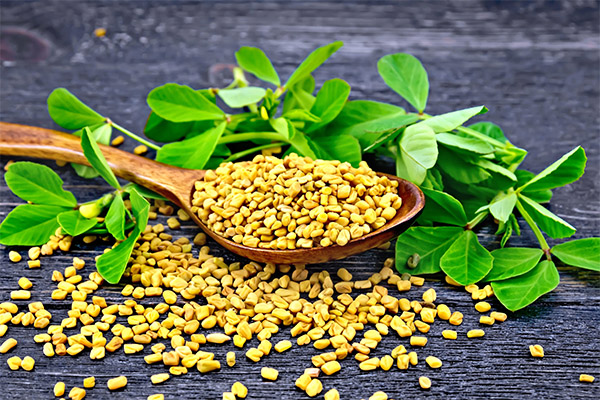
General benefits
The fruits and stems of fenugreek have positive effects on the human body:
- blood sugar levels are reduced;
- It prevents the accumulation of cholesterol;
- It improves gastrointestinal function - an astringent effect;
- normalizes BP;
- Stabilizes the function of the urinary system;
- Increases the rate of regeneration of the skin;
- blocks the formation of plaques and blood clots;
- spitting up is strengthened;
- Inflammation is suppressed.
Fenugreek can help restore strength after prolonged illness, prolonged physical exertion, or attacks of chronic fatigue. Shambhala is able to:
- relax the nervous system;
- normalize heartbeat;
- Strengthen the vascular walls;
- lower the temperature;
- eliminate flatulence;
- help with diabetes and gynecological diseases;
- to protonate the body;
- Significantly reduce the symptoms of bronchial asthma.
Mushroom herb will also help relieve pain syndrome, blunt the degenerative processes in both joint and cartilage tissues. It is considered indispensable for colds, flu and other infectious manifestations.
Fenugreek contains dietary fibers, including galactomannan The latter contribute to a significant reduction in appetite and the glycemic index of the food taken together with Arabian helba. This has a good effect on the amount of lipid layer - it begins to slowly decrease. Delayed carbohydrate digestibility is appreciated in the treatment of diabetes.
The plant stimulates the work of the brain, provides elasticity and tone of the heart and blood vessels, reduces the level of harmful cholesterol. Thanks to this, the body is protected from atherosclerotic and vascular diseases, which are directly related to the destructive process in them.
Shambhala acts as the main ingredient in an effective remedy that helps to eliminate carbuncles, boils and other pus-inflammatory formations, as well as rashes and peeling. That is, fenugreek helps to regenerate and restore the skin.
Chaman has a beneficial effect on the oral cavity as well. Toothache is temporarily assuaged by herbal infusions and decoctions based on melissitus, that is, by gargling the inflammatory processes are blunted. But folk remedies do not exclude a visit to the dentist.
For women
Melissitus is familiar to the fair sex and is actively used not only as a condiment for meat or soups, but also as a medicinal remedy. When gynecological problems arise, diosgenin compounds close to progesterone can help the female body. If hormonal fluctuations have occurred, the substance is able to carry out the synthesis of the necessary amount of steroid groups, namely corticosteroids and estrogen. As a result, the background stabilizes naturally.
Also fenugreek helps to eliminate inflammatory processes in the uterus, vagina and vulva. For this purpose, a procedure of sprinkling with strong infusions of chamannes is performed. It is necessary to steep 2 tablespoons with boiling water. The plant is also used for other female problems:
- polycystic ovaries;
- painful menstruation;
- infertility;
- Decline of sexual desire;
- insufficient lactation;
- Increased testosterone;
- hair loss and brittle nail plates;
- increased sex drive;
- menopause;
- postpartum period.
More and more specialists in the field of endocrinology support methods of treatment of profile diseases using substitutes of hormones of natural origin, which act on the pituitary gland, pancreas and thyroid gland in the same way as those produced by the human body. The natural analogues are effective antioxidants, providing a purge of free radicals and toxins.
Shambhala contains compounds of glycyrrhizic acid. The functional properties of the latter are similar to one of the hormones, cortisol. It is responsible for fighting inflammation and destroying harmful bacteria. In sufficient quantities it helps to fight polycystic disease, high cholesterol and blood pressure. Fenugreek is able to prevent malignant tumors with its isoflavone molecules.
To increase the luminosity and firmness of your breasts, add 7-8 drops of fenugreek oil to olive oil and massage it onto your breasts. Gently massage the area and rinse with a contrast shower. Repeat 3 times a week. The result will appear after a month of regular use of the oil mixture.
When you have problems with conception, pour 1 tablespoon of fenugreek seeds in boiling water and simmer on medium heat for about 5-7 minutes. In the resulting broth after it reaches room temperature, add a slice of lemon and finely grated ginger - 1/2 teaspoon. To achieve the desired result, take the mixture for 30 days, 2-3 glasses a day.
For men
For members of the stronger sex, Arabian helba is also of interest. The plant stimulates the active production of testosterone, which normalizes the level of potency and sex drive. Fenugreek prevents adenoma and improves blood circulation in the pelvic organs. Due to the large amount of saponin, the level of male sex hormone increases by 10-15% on average. With regular use, stable spermatogenesis is guaranteed.
In folk medicine, there are several easy-to-prepare recipes that greatly enhance male health in a short period of time.
To improve blood circulation you will need:
- Fruits of shamballa - 75 g.
- Yarrow (leaves) - 120 g.
- Calamus roots - 70 g.
- Boiling water - 1.5 cups.
It is necessary to mix all ingredients, pour boiling water and let stand for 30-40 minutes. Within a week, take 2-3 times a day, 120 ml.
To make a remedy that helps with impotence, you need to take the following ingredients:
- Chopped mushroom herb - 15 g.
- Warmed milk - 250 ml.
Mix the components and bring to a boil over medium heat. To achieve maximum effect, take the resulting drink daily for a month.
If you are pregnant
Fenugreek contains about 20% of protein components, as well as trace elements and vitamins. The seeds contain not only alkaloid and amino acid groups, but also a combination of dietary fiber and saponin. Fenugreek is a natural source of trace elements, including silicon, potassium and iron, and diosgenin, a hormone that tones the female urogenital system.
Arab Helba during pregnancy is allowed in moderate quantities, otherwise uterine tone will increase and the likelihood of premature birth will increase dramatically. But unpleasant consequences can be avoided if you keep the use of fenugreek to a minimum.
In permissible quantities, the fruits of the plant can be consumed by women in the pregnant position, because they have a beneficial effect on both the unborn child and the mother, but before including shamballa it is necessary to consult an experienced gynecologist. The seeds help restore hormonal balance, strengthen the immune system weakened during pregnancy and protect the female body from viral and infectious diseases.
When breastfeeding
One of the most valuable properties of Arabian hellebore is the ability to significantly increase lactation. The influx of milk in new mothers occurs due to the presence in the composition of a natural prolactin analogue.
To increase lactation, you need to prepare a solution of 1 tablespoon of fenugreek seeds and a glass of water. Leave the mixture on the fire until it boils and then cool. In the resulting decoction add half a slice of lemon and take before breastfeeding a quarter cup.
The composition helps to increase the amount of milk and will be a salvation for nursing mothers. Together with lactation, the plant has a stimulating effect on breast growth - this fact has been proven by scientists at an Indian university.
For children
The spice contains a large number of biologically active substances. Therefore, doctors do not recommend the use of fenugreek fruits for children under the age of 10 years. Regular intake is contraindicated. Older children can take medicines based on fenugreek.
When losing weight.
The pronounced biologically active properties of fenugreek allow the use of its seeds in the fight against extra pounds. The fruits help stimulate the metabolism, thereby accelerating the processing of incoming lipids.
Mushroom herb will help to remove extra centimeters with comfort because of its features:
- Thanks to effective antioxidants will get rid of toxins and free radicals.
- It has a low caloric value - about 35 units per 1 tablespoon.
- Thanks to the fiber and bitter taste will give a long feeling of satiety and prevent regular overeating.
- Neutralizes stress.
- It will provide a balance of taste.
- Improve immunity.
During weight loss, teas from Arabian heba should be taken daily before noon. It is necessary to brew a collection of ground or whole seeds, but it is strictly forbidden to add any sweeteners, including honey. To enhance the desired effect, you need to mix with the infusion 1 teaspoon of grated fresh ginger root.
The drink will be tart and pleasant to the taste, and will have a favorable effect on the gastrointestinal tract. It is not recommended to take the mixture on an empty stomach, because then the tea will act as a strong laxative. The yolk collection of melissitus seeds will help to get rid not only of excess weight, but also of polyps, mucus and some kinds of parasites.
Recent studies have confirmed the effectiveness of fenugreek in the fight against obesity. If the goal is to lose a few pounds for an event, this plant is the perfect helper. In the first 7 days you can get rid of 4-5 kg, further the process will go slower.
If you have orange peel, you can prepare a hard peeling from candied honey, freshly ground coffee beans and whole fenugreek seeds. The resulting scrub to treat problem areas 2-3 times in 7 days.
How is the germinated seed useful?
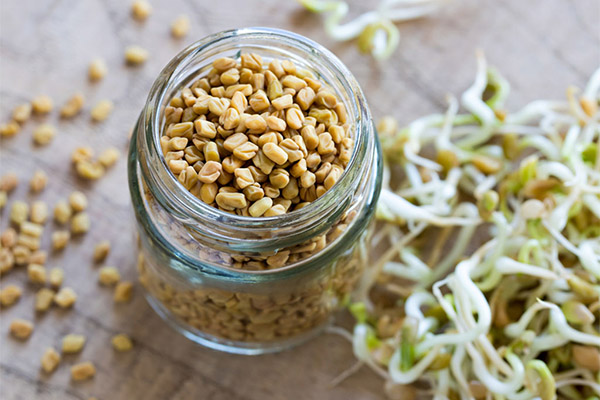
The usefulness of the sprouts of Arabian hemlock is in no way inferior to that of fish oil. So they not only purify the blood, but also normalize the kidneys and liver. The male body is able to extract the most useful substances from the fruit of the plant. If you use just 1 teaspoon of sprouted seeds, hormone production will improve and sexual function will stabilize.
Sprouts can also be added to cooked meals. Germination will take about a week: just fill the seeds with water and keep them at room temperature. The liquid needs to be poured out every 12 hours, then refilled after the same amount of time. That is, the seeds remain wet all the time, completely covered with water only 3.5 days.
Is fenugreek cheese useful?
The technology of making the product and the ingredients affect the caloric value. Figures start from 135 units, but contain only 1 g of fat and 32 g of protein, the carbohydrate components are completely absent. Cheese with shamballa differs from counterparts in some useful properties:
- stops neuroses;
- prevents frequent headaches;
- stabilizes blood sugar levels;
- promotes the proper functioning of the gastrointestinal tract;
- reduces the likelihood of anemia.
Chaman is considered a cure for a hundred diseases. For this reason, cheeses with the addition of Arabian helba seeds in reasonable quantities will be beneficial to absolutely everyone.
Fenugreek in medicine
Fenugreek fruits both in ancient times and nowadays are widely used as an adjunctive folk therapy for a wide range of ailments. In order to start taking fenugreek, you need to consult a specialist, because self-diagnosis is not always absolutely accurate and correct.
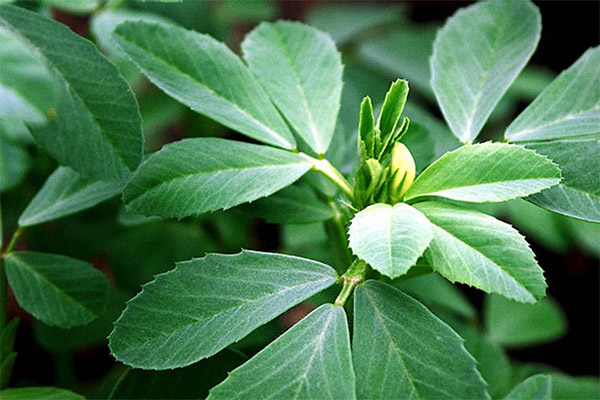
In case of diabetes.
Fenugreek is a natural substitute for the usual refined sugar. Chaman will not have any effect on insulin values in the blood. The fruit of the shrub is famous for its substances - antiandrogens, which can neutralize disorders that have occurred during the thyroid gland and pituitary gland.
Pathologies in the organs of the endocrine system are caused by increased levels of the hormone testosterone. Melissitus is excellent for patients with any diagnosed form of diabetes. Consumption of remedies with chaman will allow:
- Reduce the level of sugars in the body;
- normalize metabolic processes;
- Normalize the function of the pancreas and thyroid gland;
- Remove toxins and detoxes;
- Reduce the percentage of fat in tissues;
- To restore the tone of the cardiovascular system;
- To prevent the appearance of extra pounds;
- Stabilize the nervous system.
For the treatment and prevention of diabetes, doctors recommend sprouting shamballa seeds. To do this, take 3-4 tablespoons of well-dried fruits of fenugreek and put them in a flat plate. Rinse with cold running water and soak for 10-12 hours in a closed container. After that, drain the excess liquid and leave for another day and a half, but the lid should remain in place. After 36 hours the sprouted seed is ready for consumption. Use 1 teaspoon before each meal.
Diabetic patients after using fenugreek feel relief, because the substances in the composition inhibit the absorption of sugars, and the amino acid groups stimulate insulin production.
Important: The glycemic index of fenugreek is 5 units.
In pancreatitis.
The disease is characterized by a set of manifestations, but they all occur because of one common feature - inflammation of the pancreas. The toxins produced adversely affect the heart and kidneys, so it is necessary to follow a strict diet.
When dieting, organ irritant foods are strictly forbidden. The main effect of chaman is to regenerate tissues already affected by the disease. Teas are prepared for restoration. But before consuming them, it is necessary to consult a specialist.
When preparing the broth, it is recommended to mix 120 grams of grated ginger with 25 grams of mushroom grass seeds and a pinch of cumin and turmeric. Grind the zest of an orange or lemon. Pour 600 ml of boiling water and insist 1.5-2 hours. Consume before lunch and dinner, 100 ml half an hour before the meal.
For the intestines.
After entering the gastrointestinal tract fenugreek seeds create a protective film. The latter envelops the mucous membranes in the gastrointestinal tract and relieves the existing inflammation. That is, acidic secretion is not absorbed by the tissues and ulcers or gastritis stops progressing.
Melissitus fruit powder is used in the treatment and prevention of both heartburn and b gastoesophageal reflux manifestations. To do this, 20 g of fenugreek powder in dry form should be drunk with 100 ml of milk or water 25 minutes before a meal.
The fruits of Arabian helba are composed of a large amount of dietary fiber, which removes toxic substances and free radicals, thus preventing cancer in the intestines.
Preparation of the preventive mixture: 1 tablespoon of germinated seeds of chambray mixed with a similar amount of wheat sprouts, half the celery root and 2 tablespoons of oatmeal. To the resulting mixture add 40 ml of lemon juice, 30 ml of honey and 20 g of flax seeds. Mix everything thoroughly and take 4 times a day regardless of the established diet.
For coughs.
In respiratory tract infections, fenugreek performs the following functions:
- Decontamination of foreign microorganisms - streptococci and staphylococci.
- Stimulation of antibody production.
- Neutralization of adverse microflora in the throat and lungs.
- Strengthening the vascular walls.
- Nourishment of the mucous membranes.
Infectious diseases provoke a strong loss of moisture. It is recommended to consume at least 2,000 ml of purified warm water per day to be effective and prevent metabolic problems.
The mushroom herb will help in the fight against a dry cough resulting from a cold. Fenugreek is used in folk medicine to quench thirst and as an expectorant. To prepare a therapeutic mixture in a mortar, grind the fruits of melissitus with cumin and barberry. Drink 1 teaspoon of the composition with a glass of water and after 40 minutes start eating.
To cure runny nose, sore throat and to eliminate difficulty in breathing, 1 tablespoon of dried fenugreek should be poured with a glass of steep boiling water and cooled to room temperature. Strain the mixture and drink 2-3 times 100 ml per day with the addition of rosehip and honey.
For flatulence
Melissitus will also help get rid of excess gas accumulated in the intestines. The popular shamballa in its dried form has retained its healing properties for the GI tract. The musculature of the walls of the intestine after absorption of the components of Arabian helba will normalize. The work of putrefactive microorganisms under the influence of fenugreek will stop. The fruits of the plant in such problems with the gastrointestinal tract are taken as a supplement to the usual food or in the form of broth.
The use of chaman seeds is recommended for atony, congested bile and flatulence. If the spice is acutely felt in dishes and interferes with their perception, it is replaced by the oil of Arabian helba, which is taken 5 times on a sugar cube. Three to five drops are sufficient.
An infusion can be made from the seeds of fenugreek to prevent excessive gas accumulation and further digestive problems. Pour 3 tablespoons of dried fruits of the plant with a glass of slightly warm water and insist for about 40-50 minutes. The resulting mixture should be filtered and, if necessary, cooled. Apply three times a day, 75 ml, store no more than 48 hours in the refrigerator.
With constipation
There is a bitterness in the seeds of melissitus, which appears when biting, and the substances that provoke it remove from the body excess mucus accumulating on the intestinal walls. After removal of the slimy substance, nutrients are better absorbed and peristalsis - the ability of the muscles of the intestines to contract - is improved several times.
Chronic constipation and frequent disorders are treated with fenugreek.
To prepare one of the therapeutic laxatives for an adult, it is necessary to mix crushed fenugreek seeds with milk in a ratio of 1:20. Boil the resulting mixture over medium heat for 3-5 minutes and cool. After straining the remedy to drink 100 ml before each meal, because it is able to soften and cure the organs of the upper digestive system.
Also, to improve peristalsis, 20 g of fenugreek seeds should be soaked in clean cold water and left overnight. The next morning, eat a pulp of the seeds and drink the resulting liquid completely.
In case of gout
Fenugreek has a neutralizing effect. For effective treatment of gout, a 10-day course is enough. After completing the intake, the attacks will occur much less often or stop altogether. To prepare the remedy, you will need to mix 30 mg of grinded seeds with baking soda and pour warm water. The resulting mixture should be thoroughly mixed and drunk 50 ml before meals. The cure is more effective in combination with a salt-free diet.
For the liver
To support an important organ, you can take a mixture of grinded dandelion stem, milk thistle and mushroom grass. Take the ingredients in equal proportions. Pour a glass of boiling water and insist for half an hour. Then strain and drink 4 times a day after meals for two weeks, then the body needs a month break.
The decoction will have a positive effect not only on the liver, but also cleanses the intestines, also helps in the fight against hepatosis.
At menopause.
At menopause, women with low estrogen levels are recommended to crush 30 g of fenugreek seeds and pour 250 boiling water. Leave the mixture for a couple of hours and take 3-4 times a day, 100 ml before each meal. Chaman contains compounds of diosgenin, similar in chemical structure to the female sex hormones.
When hypothyroidism.
The organic acids in the plant help to quickly restore the acid-base balance. To treat hypothyroidism, a mixture of 40 mg melissitus fruits is used in conjunction with medication. Seeds brewed in half a cup of boiling water and insist 15-20 minutes. Then add to the resulting solution 1 tablespoon of apple cider vinegar. Take 2 tablespoons of the mixture on an empty stomach to stop the manifestations of this disease.
Oncology
An infusion of dried chambray, nettle and birch mushroom will improve the condition of a cancer patient. Grind all the ingredients and insist at room temperature for 2 hours, but pre-pour a mixture of boiling water and sugar. The ratio of dry ingredients is equal, and liquid will need one glass at the rate of 60 grams of dried herbs. The composition should be taken 3 times a day before meals.
With mastopathy.
Arab helba prevents excessive overgrowth of connective tissues. Such a manifestation is characteristic of mastopathy. Fenugreek prevents disorders of the thyroid and pancreas, thereby normalizing the hormonal background, violations of which provoke this disease. To prepare a therapeutic agent, boil 100 mg of dried seeds in water for 7 minutes. Then grind the mixture additionally and mix with 70 g of honey, then use 2 times a day - before breakfast and at night.
Fenugreek in cosmetology
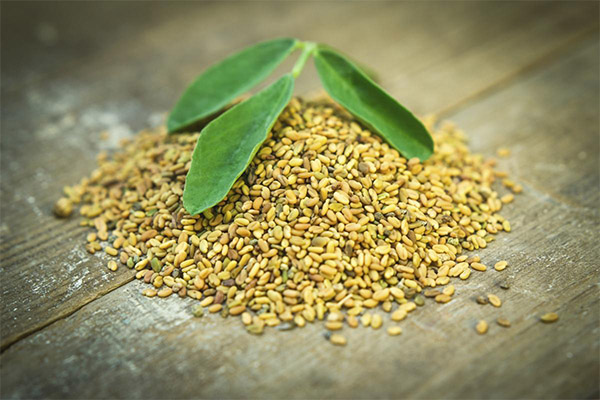
- The seeds of Arabian helba will help in the fight against cellulite. To prepare a remedy, you need to grind 100 grams of dried beans and add the resulting mixture to 200 ml of cold water. Then put on medium heat and after boiling, boil for about 5 minutes. Grind the resulting mixture further and add to it 1 teaspoon each of ground red pepper and freshly ground coffee beans. Thoroughly mix and apply to the problem areas with a stiff massage brush. Repeat the procedure 2-3 times a week. It will take one month of regular scrubbing before the first visible results appear.
- To eliminate dandruff, as well as to prevent its further appearance, you can use a composition of 2 tablespoons of chopped chambray leaves and 40 ml of olive or linseed oil. Apply the mixture to the problem area with light massaging movements, leave it for about 20 minutes and wash off with warm water.
- With oily facial skin and pronounced acne will help a mixture of 2 teaspoons of chaman oil, sesame oil and an aspirin tablet, which is pre-melted. After mixing all the ingredients, apply the mask to the problem areas and wash off after 15 minutes with cool water.
- To revitalize the scalp, you need to add 15 mg of ground mushroom grass seeds to a glass of boiling water and steep for about half an hour. After that, mix 5-6 drops of red pepper oil into the mixture and apply it to damp hair, rubbing the composition into the covers. It is necessary to soak for 10-12 minutes, and then wash your head with the usual shampoo. The treatment will have a positive effect on the hair - it will become soft and shiny.
Using fenugreek in cooking
In addition to the broad preventive and therapeutic effects of melissitus, note the pleasant taste characteristics of the plant. The mushroom herb is a common condiment around the world, widely used in cooking. Fenugreek can be found in soups, salads, porridges, pastries, cheeses and baked goods. Melissitus is not combined only with fish and seafood dishes.
Arabian Sauce
Ingredients:
- Chaman seeds - 3 tablespoons.
- Olive oil - 1 tablespoon.
- Salt and black pepper - to taste.
Soak the beans in 350 ml of water for 24 hours. Then drain the liquid and grind them with a blender until they become a thick porridge. Add olive oil and spices. Goes well with meat dishes.
Egyptian classic pasta
Needed:
- Fenugreek seeds - 120 g.
- Garlic - 5 cloves.
- Lemon - 1 piece.
- Cilantro and dill - a bunch each.
- Spices - to taste.
Leave the seeds in warm water overnight. Then drain the liquid and transfer to the bowl of a blender along with garlic, herbs, lemon juice and spices. Blend thoroughly. If it is too thick, add water. The resulting pulp put in the refrigerator for a couple of hours. You can spread the paste on rye bread or use it while you bake or stew meat.
Robiloe Cheese
Ingredients:
- Milk with a high percentage of fat - 6 liters.
- Sour cream 20% - 3 tablespoons.
- Urea enzyme - 0,06 gr.
- Purified water - 1,2 gr.
- Fenugreek seeds - 4 tablespoons.
- Coarse salt - 3,5 tablespoons.
Dissolve the enzymatic additive in chilled water and leave it for about half an hour. Then heat all the milk on medium heat to 35 ° C and transfer the sour cream to it, leave for 40 minutes. After that, mix both masses and put on low heat. When the first thick clots appear, take them out, cut them and drop them back into the milk whey - until they reach a more rounded shape. Place the cheese in a basket lined with gauze soaked in water and squeeze out the product as much as possible. Preparations left at room temperature for 12 hours, and after a period of time to put in a cool place for a similar period, but pre-pour the brine of 200 ml of water and 2 tablespoons of salt. After which the milk cheese is dried and left to mature for 10 days.
The finished product has a tangy taste and aroma, it is used as a condiment - added to pizza dough or sauces.
How to choose and preserve the seeds
As a spice, Arabian hellebore can be found in the form of whole seeds or ground. You can buy fenugreek in a store, at a spice shop or online. A quality product has a bitter flavor, smooth fruits with a gray or brownish hue.
The whole spice is stored for up to two years, and the ground spice - no more than six months. Chambal will do well in airtight glass containers. Chaman is used both in national spices (ucho suneli or curry) and on its own.
How to make tea with fenugreek
Helba is called a popular drink around the world. It has gained its fame because of its taste and healthful qualities. It is also referred to as yellow or Egyptian tea. The drink is most popular in the homeland of the pharaohs and in the world of peaceful Greece.
To prepare a healing potion it is necessary to understand that the process has its own subtleties. After all, it will be brewed not everyone is familiar tea leaves, and beans. Therefore, in order for the tea to bring maximum benefit after use, it should be prepared in stages:
- Prepare the fruit - rinse under running water and dry for a couple of days in a dry place.
- If you don't have time, speed up the process and roast the raw material.
- In a container pour purified water, following the proportion - for 10 grams 250 ml of liquid.
- Then put it on medium heat and bring to a boil.
- Boil for 8-10 minutes and strain.
- In the finished drink, if desired, add grated fresh ginger, honey and a slice of lemon.
Tea, unlike its counterparts, in the mouth leaves no aftertaste at all. Once again you will want to drink this fragrant and useful drink again.
Fenugreek oil: properties and uses
Melissitus is widespread both in medicine and in cosmetology, because the component composition is replete with trace elements and active substances. Oil from the seeds of Arabian hellebore is a viscous dark liquid that has a rich and persistent odor of fresh nut crusts.

The essence contains in large quantities:
- Vitamins C and E;
- folic acid and ascorbic acid;
- potassium;
- copper;
- iron;
- zinc;
- fluorine;
- choline;
- calcium;
- magnesium;
- saponins;
- antioxidants;
- enzymes.
In terms of chemical composition and effectiveness, the oil is similar to fish oil. The composition can be taken alone or as a medicinal and cosmetic supplement. The essence will perfectly complement the extraction of flax, apricot or burdock.
Mushroom herb oil is widely used in remedies in folk medicine because of the wide range of effects on the human body for such conditions
- Menstrual or reproductive disorders;
- impaired immunity;
- diseases of the gastrointestinal tract;
- anemia;
- parasitic organisms - worms;
- diabetes mellitus;
- Frequent anxiety or stress conditions.
The use of the ether should be practiced with caution, strictly following the instructions on the package and only after consultation with your doctor. Exceeding the recommended dosage is fraught with side effects and intoxication of the body.
Harm and contraindications
Fenugreek, despite its obvious benefits, is not strongly recommended for certain diseases. To such diseases and conditions can include:
- some cancer pathologies;
- diabetes decompensated type;
- lack of platelets in the blood;
- High levels of estrogen;
- First trimester of pregnancy.
Chamomile is contraindicated in children under 10 years of age in any form, except for cough syrups. An overdose of chamomile is fraught with allergic reactions, diarrhea, nausea, severe gastrointestinal pain, nosebleeds.
Interesting Facts
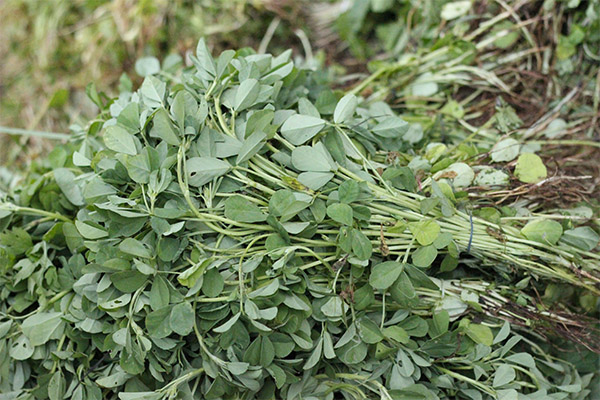
- A tea with an unusual flavor called "chelba" is a traditional and favorite drink of the people of Egypt and Morocco.
- Indian women in ancient times ate the fruit of chaman, mixed with palm oil, in the postpartum period - it helped strengthen the muscles of the back.
- Egyptian women toasted the seeds of melissitus to give more volume to their thighs.
- The healing properties of the plant were discovered by Hippocrates.
- Chinese doctors used chambala seed for hernias, fevers and low potency.
«Important: All information on this site is provided for informational purposes only for informational purposes only. Consult with a health care professional before using any recommendations. health care professional before using any of the recommendations. Neither the editors nor the authors shall be liable for any possible harm caused by materials."


